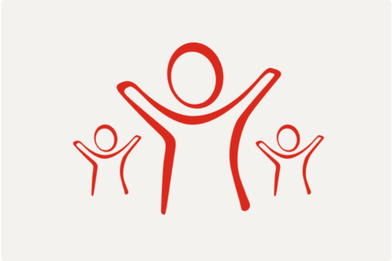Children have taken photos of rubble and their homes in Syria
WE STAND SIDE BY SIDE WITH CHILDREN IN THE WORLD'S TOUGHEST PLACES.
BRUSSELS, 12 June 2023 – Young people from Syria are confronting world leaders and major donors with snapshots of their lives after 12 years of war and the recent devastating earthquake at a pivotal fundraising conference in Brussels today.
Supported by Save the Children, the photo exhibition Out of the Rubble: The earthquakes and conflict destruction through the eyes of Syria’s children, inside the European Parliament, features series of photographs taken by children and youth in Syria to highlight the widespread destruction the country has experienced, with the aim of increasing funding.
One photograph, taken by Bana*, 17, of graffiti on the side of a building destroyed by the earthquake in North West Syria in February , reads ‘don’t forget about us’. She said: “My message in this photo is to let people know that we are here, we are alive, and we have the right like every other person to live our lives normally.”
The earthquake and subsequent aftershocks killed about 6,000 people and injured another 12,000 across Syria. Of the 8.8 million Syrians affected, 3.7 million were children and pregnant women.
Last month Save the Children warned that the economic impact of the earthquake threatens to push another 665,000 Syrians into hunger, with malnutrition and stunting in children looming.
Meanwhile Lina*, 17, also from Idlib in North West Syria, has been living in a camp since the earthquake destroyed her home. She took a picture of the ruins of her home, saying: “The plants and greenery resemble the life that was growing in this house, people have put hope and happiness into their home, but it was all suddenly lost in a second.”
Lina’s* education has been disrupted as a result of the earthquake, but she hopes to be able to return to school.
Even before the earthquake, 12 years of war had taken their toll on Syria and its children. When Yara* was 14, she and her family fled Raqqa in North East Syria, and she had to drop out of school. Now 19, she recently returned and took a picture of the devastation.
Yara said: “Having to see destroyed buildings five years on reminds me of the day when the bombardment of Raqqa started. I remember being on the roof of our house watching houses and buildings being bombed and feeling terrified. I hope that my city will recover and return to its former self from which I was forced to flee when I was a little girl.”
Wafaa*, 19, also recently returned to Raqqa following displacement. She said: “The devastating impact of the conflict was evident everywhere, with demolished houses and schools. I like taking pictures with people and life in them because that gives me hope that everything will be fine again. I hope the war ends in Syria and we return to our normal life and to our schools and that every child who has been deprived of education returns to school.”
At this week’s conference, Save the Children is calling for donors to inject urgent funding for more longer-term initiatives that can tackle the worsening humanitarian situation as the economic impacts of the earthquake and 12 years of conflict place children at greater risk. As well as an increase in hunger children face multiple, worsening protection risks, including child marriage, sexual violence, and, kidnapping and recruitment by armed groups.
Save the Children is calling for donors to increase funds that focus on building the resilience of not just the 6.8 million people displaced inside Syria but also over 5 million refugees still in neighbouring countries like Lebanon, where economic instability led to 99% of Syrian households reporting they did not have enough money to buy food last year.
Lebanon remains the country hosting the largest number of refugees per capita in the world, and is currently experiencing a rapidly deteriorating and multi-layered crisis which is leading to acute and increasingly visible needs among children of all population groups.
Rasha Muhrez, Syria Response Director at Save the Children said:
”The 14 photos in this exhibition, taken from across Syria, are an attempt to elevate these children’s voices and allow them to communicate directly to world leaders how desperate their situation is. It is simply impossible to see these pictures and read the words these children and not be moved to take action.
“Young people from Syria have lived with war for 12 years – for millions of children, it is all they know. It is amazing how resilient they are, and how much they have overcome, but I fear they are starting to run out of hope. We cannot continue to expect children and their families to be resilient in the face of a worsening situation, without the tools to support themselves .
“Over the next few days, leaders and donors must hear the pleas of these children and young people. Unfortunately, year after year, wealthy countries have repeatedly failed them. But with the earthquake shining a light once more on the terrible situation children have endured for far too long, we hope donors will be moved to act – and not just to patch up the wounds of war but to properly invest in services and programmes to rebuild the country and children’s lives.”
ENDS
NOTES TO EDITORS:
At the sixth annual Brussels Conference, held in 2022, donors pledged US$6.7 billion. The United Nations had sought $10.5 billion. At the fifth annual Brussels Conference, held in 2021, donors pledged $6.4 billion. The United Nations had sought $10 billion.
Multimedia content including photos to the exhibition here.
*names have been changed to protect anonymity
For further enquiries please contact:
Randa Ghazy, Regional Media Manager: Randa.Ghazy@savethechildren.org
Emily Wight, Global Media Manager: Emily.Wight@savethechildren.org
Our media out of hours (BST) contact is media@savethechildren.org.uk / +44(0)7831 650409
Please also check our Twitter account @Save_GlobalNews for news alerts, quotes, statements and location Vlogs.

.jpg-ch11029386.jpg/s56883b4bl3fg73wk7l823i0m5773g5j.jpg?g=top&w=392&h=261&format=webp&itok=ZTvODiIo)

